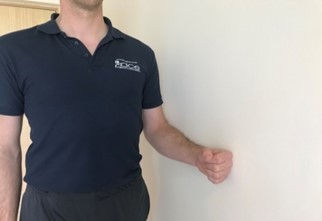Self help resources - Shoulder

Documents / Leaflets
Useful Sites
The following information has been written to help you fully self-manage your shoulder pain.
However, please self-refer straight away to be assessed by a Physiotherapist if you:
- Have had recent trauma to your shoulder and have a significant loss of movement/strength
- Have noticed any swelling, wasting or deformity
- Constant day & night shoulder pain that you cannot settle
- You are off-sick and struggling to return to work due to your shoulder pain
- Your symptoms are worsening and are not improving despite following the advice below over the course of six weeks
If you have a history of cancer, immunodeficiency or TB and have new, unexplained and constant pain then please speak to your GP whilst you attempt the following self-help advice.
What can I do to help?
Shoulder pain is common but can be self-managed really effectively following some simple advice and exercises. If you are struggling with your pain, the following advice should help you to get started:
Pain relief: Basic painkillers (like paracetamol) or non-steroidal anti-inflammatory gels (such as Ibuleve/Voltarol) are easily available over the counter without the need for prescription. These can be very effective as they lessen your discomfort and importantly allow you to keep moving/active. However, please check the labels for instructions/safe usage and any possible reasons why you should not use them. If you are currently taking any form of medication it is advisable to consult your GP or Pharmacist before taking additional pain relief.
Heat or Ice: Heat is often useful for easing pain using a hot water bottle or wheat pack. Use for 15-20 minutes at a time and repeat several times a day as necessary. However, if you have had a recent injury or flare-up you may find it more therapeutic to use an ice pack to reduce your pain/irritation. A packet of frozen peas wrapped in a tea-towel works well. Leave in place for up to 10-15 minutes at a time. Again, this can be repeated several times a day if found helpful.
Rest vs. activity: It is usually best to carry out your normal activities, but try not to overdo it. Let pain be your guide; short-lasting/temporary discomfort is fine but worsening or constant 24/7 pain indicates you are likely doing too much and need to take things a little easier. You need to pace yourself to start with and try to do a bit more each few days. You will find keeping your shoulder gently moving more comfortable than complete rest.
Scans or imaging: Scans or imaging are rarely indicated as these often correlate very poorly with symptoms. Most people without shoulder pain have changes on scans or imaging that doesn’t cause any symptoms at all.
Exercise
Exercise can be very helpful to lessen your any stiffness and achiness. The gentle exercise programme described below will allow you to keep your shoulder moving in the kindest way possible. Try this exercise programme 2-3 times a day. A small increase in pain is OK if it goes away within 30 minutes and is completely tolerable. If you feel you have done too much then don’t worry, perform smaller movements next time and then gradually increase as your pain allows. It may take a few weeks before you start to see an obvious improvement.
For a printable version of these exercises please click here
If your shoulder pain does not start to improve over the next 5-6 weeks, or gets worse despite the exercises, then you can self-refer yourself to see a Physiotherapist for an assessment.
Exercise 1 - Pendulums
Perform gentle movements (sway/circles) with the affected arm dangling down. Lean on a steady surface with the good arm to create this helpful position. Perform as big a movements as comfortably tolerated, aiming for 30-60 seconds
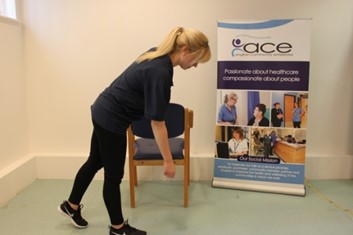
Exercise 2 - Table Top Slides
Sit or stand with your hands resting on a towel on a flat stable surface. Slide your hand forwards letting your body generate the movement. You can give assistance through the other arm by using a towel on the table as shown if needed. Perform as big as movements as comfortably tolerated, aim for 5-10 repetitions
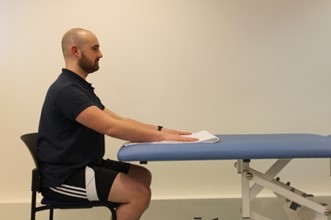
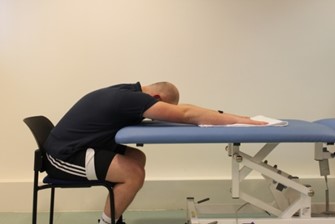
Exercise 3 – Step aways
Place both hands on a surface in front of you before stepping your body away creating passive shoulder movement. Move as far as comfortably tolerated, aiming for around 5 repetitions
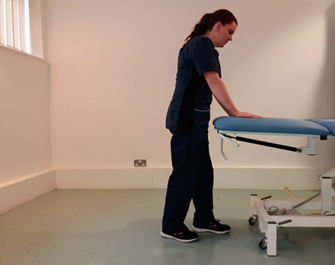
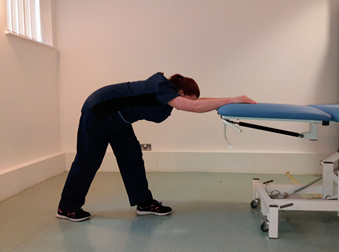
Exercise 4 - Gentle Wall Pushes
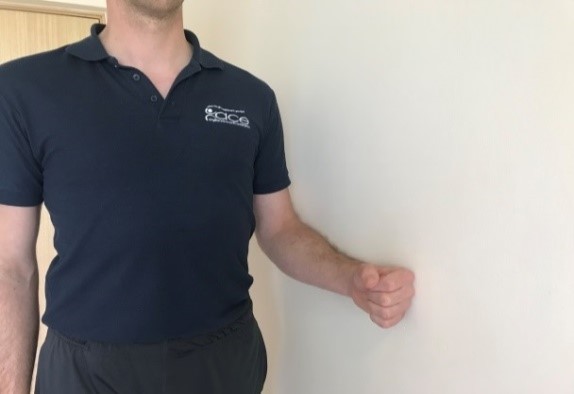 This can help ease the pain and can be repeated if helpful throughout the day to give pain relief for a few hours at a time.
This can help ease the pain and can be repeated if helpful throughout the day to give pain relief for a few hours at a time.
Stand side-on close to a wall with your arm by your side ( you can have your elbow either bent or straight) Press the arm gently sideways into the wall enough to elicit some muscle work but gentle enough to be completely pain-free for a 15-20 second push.
Rest for 30 seconds then repeat again 2-3 more times in one sitting.
